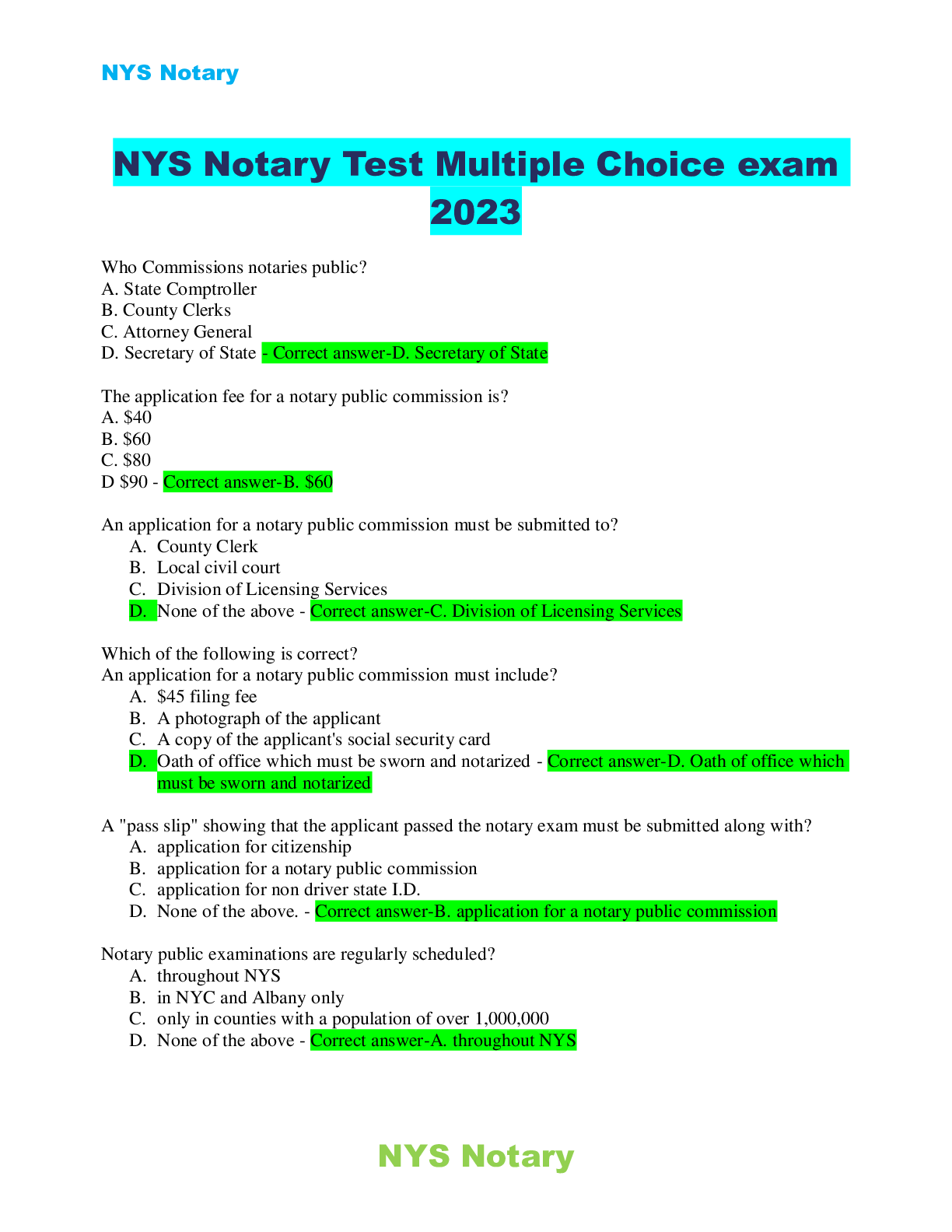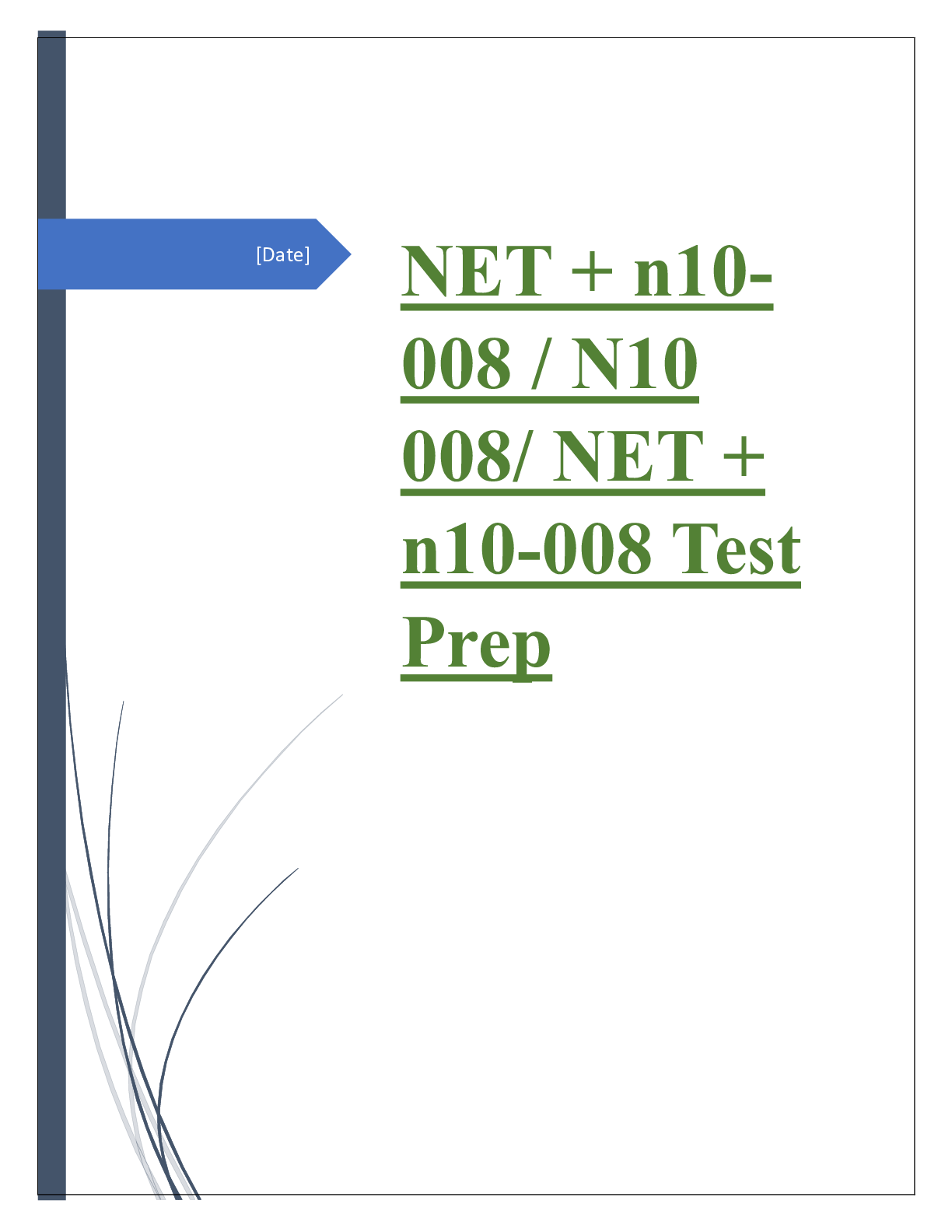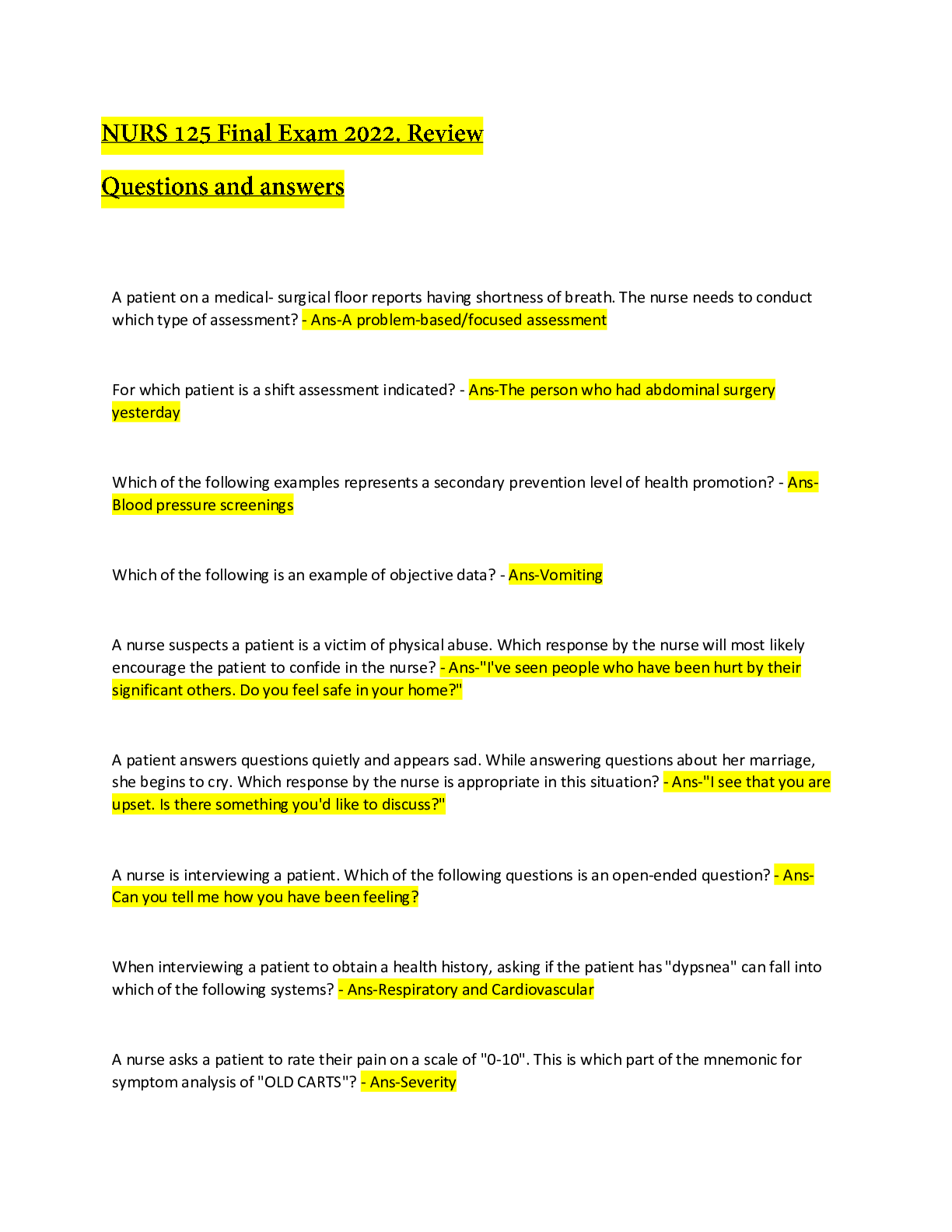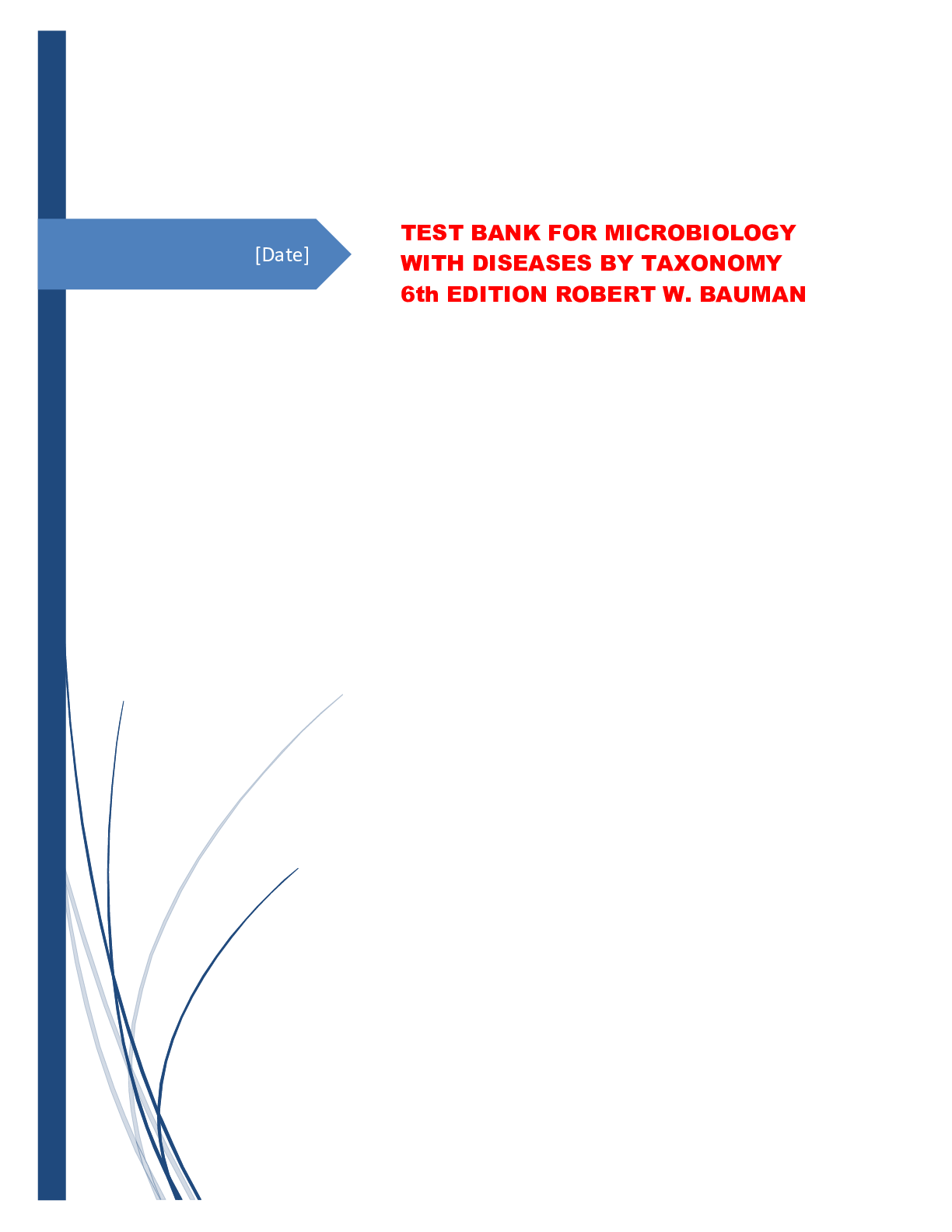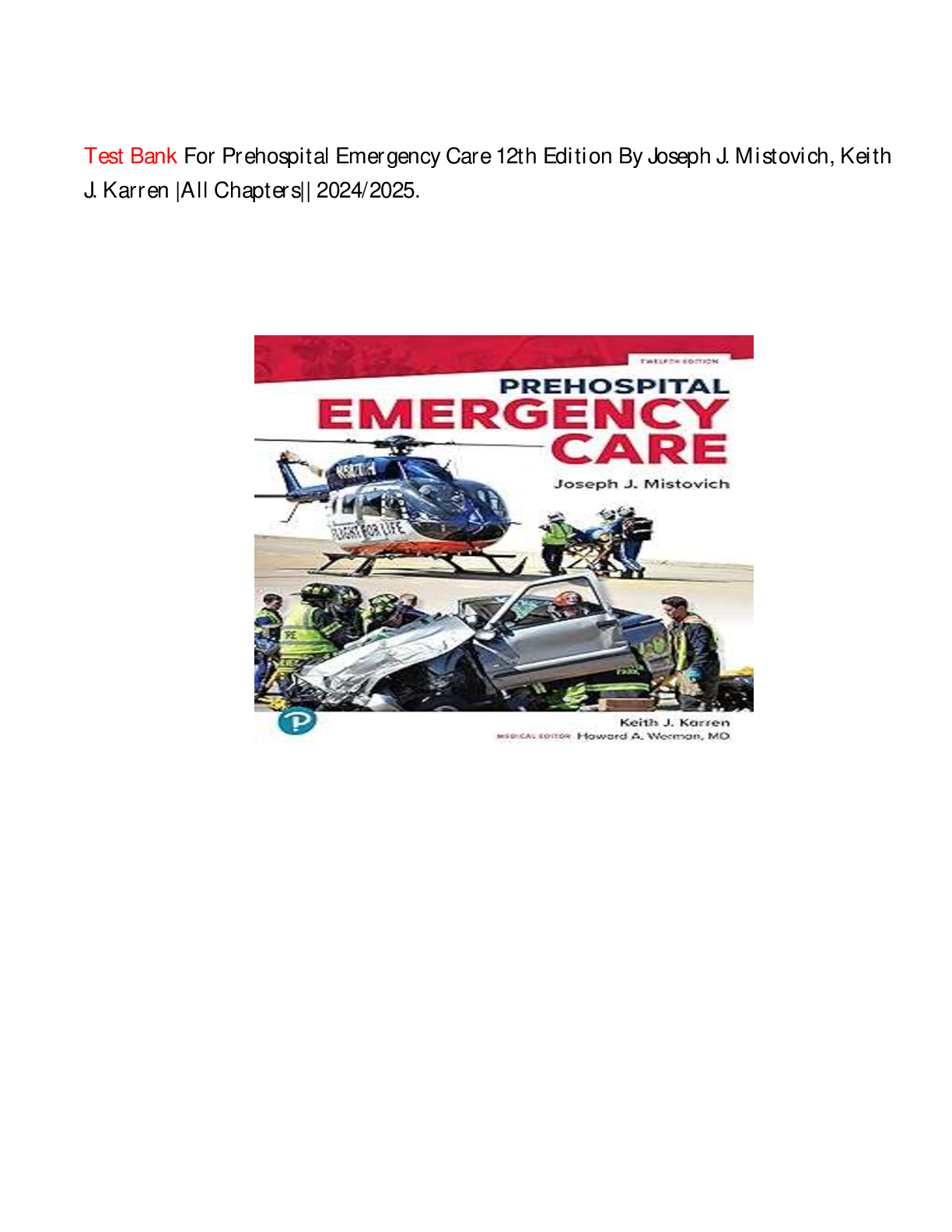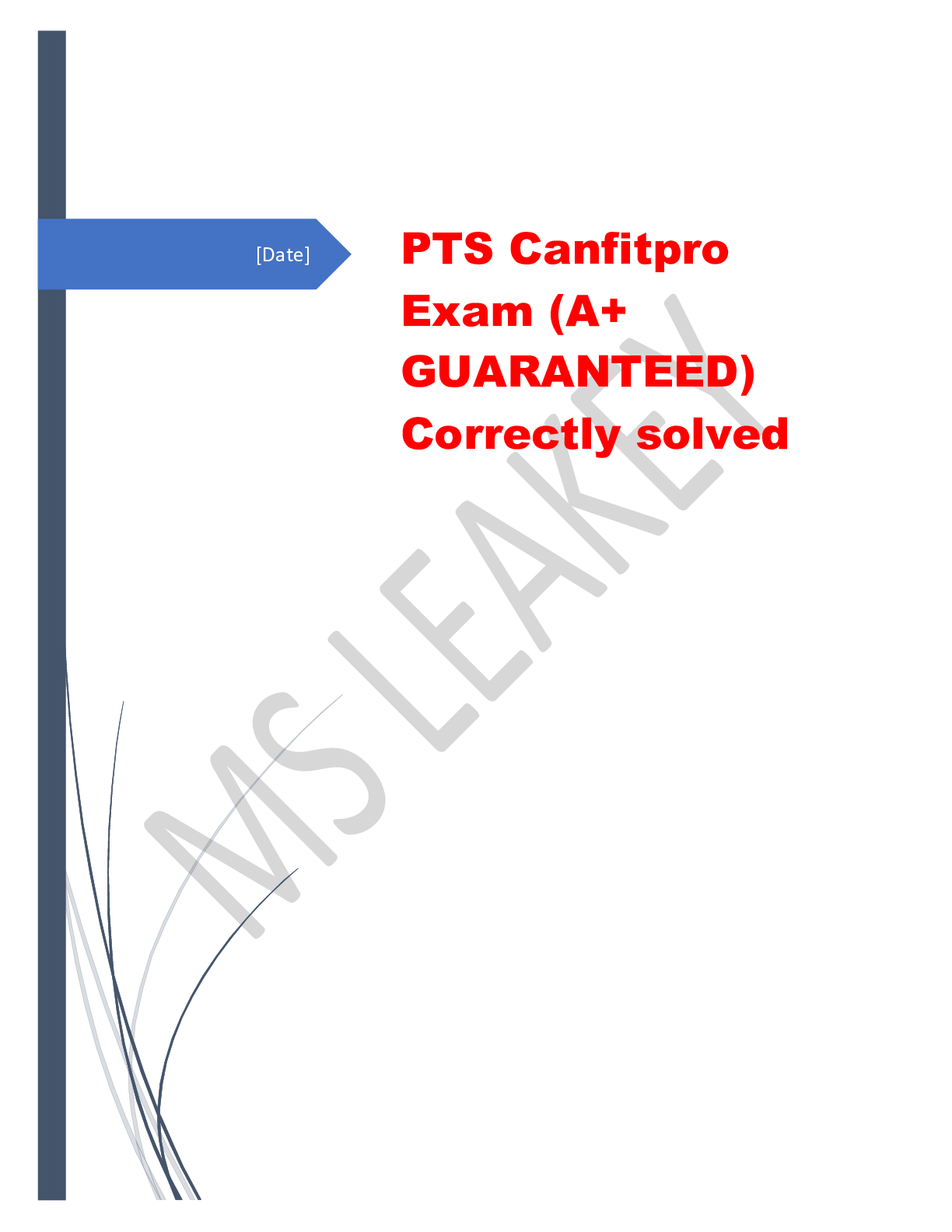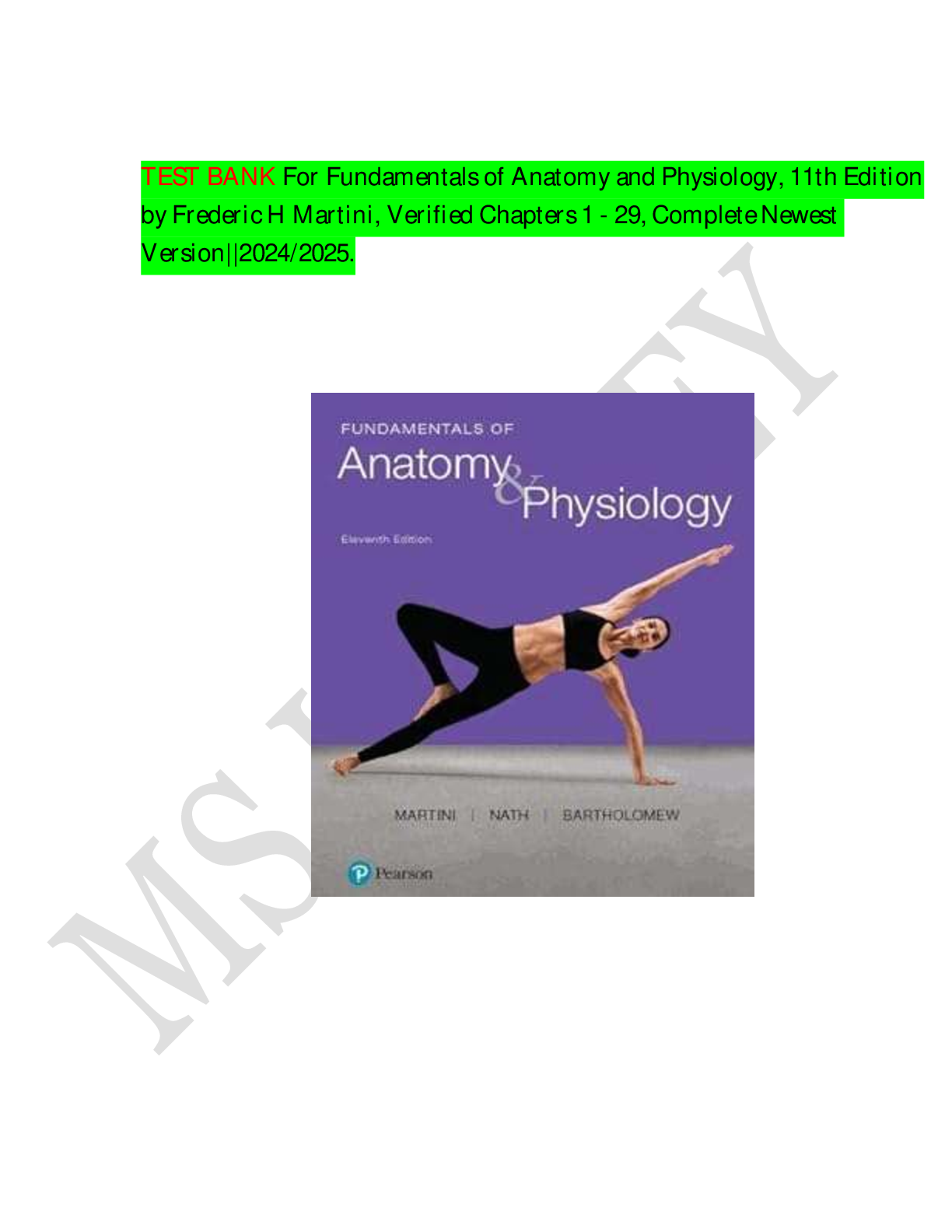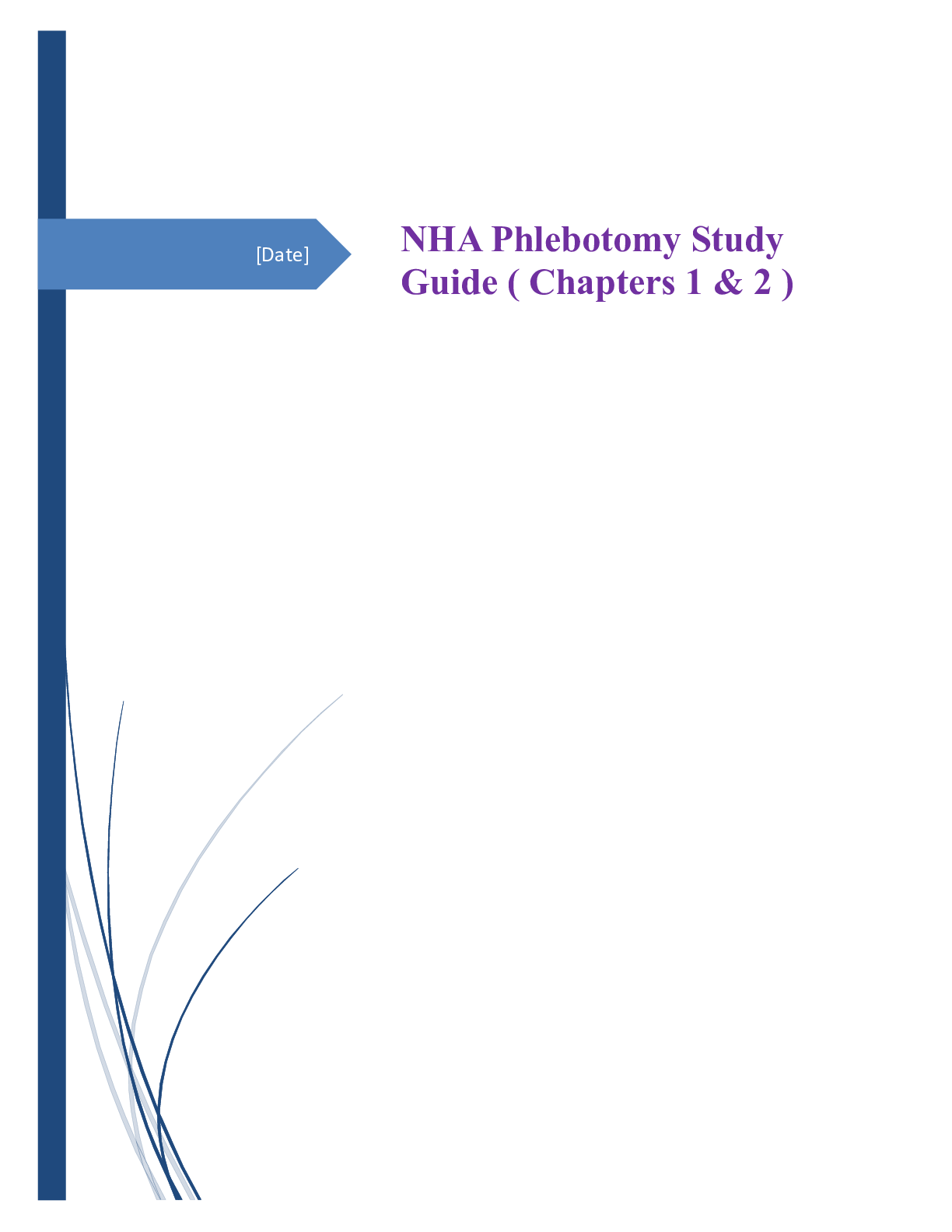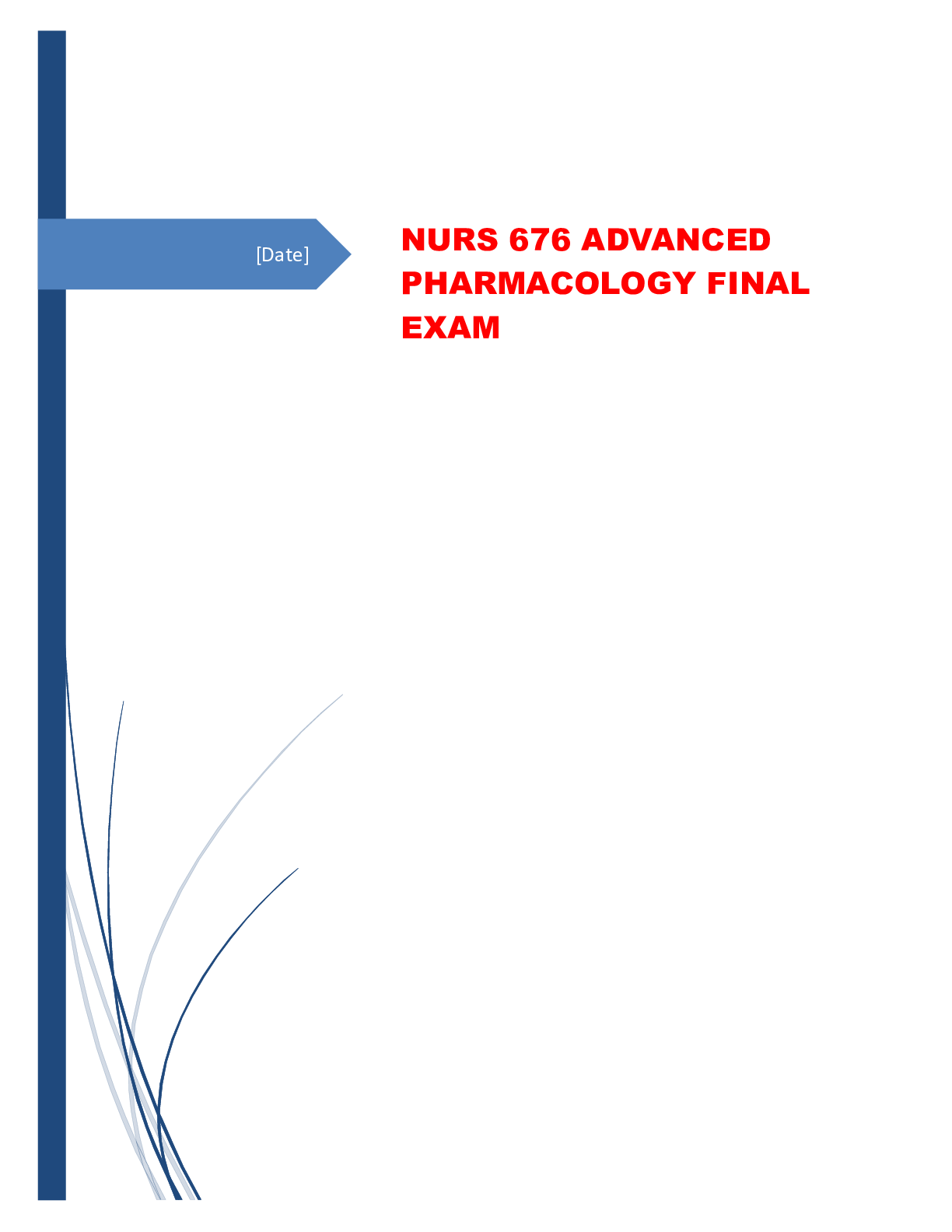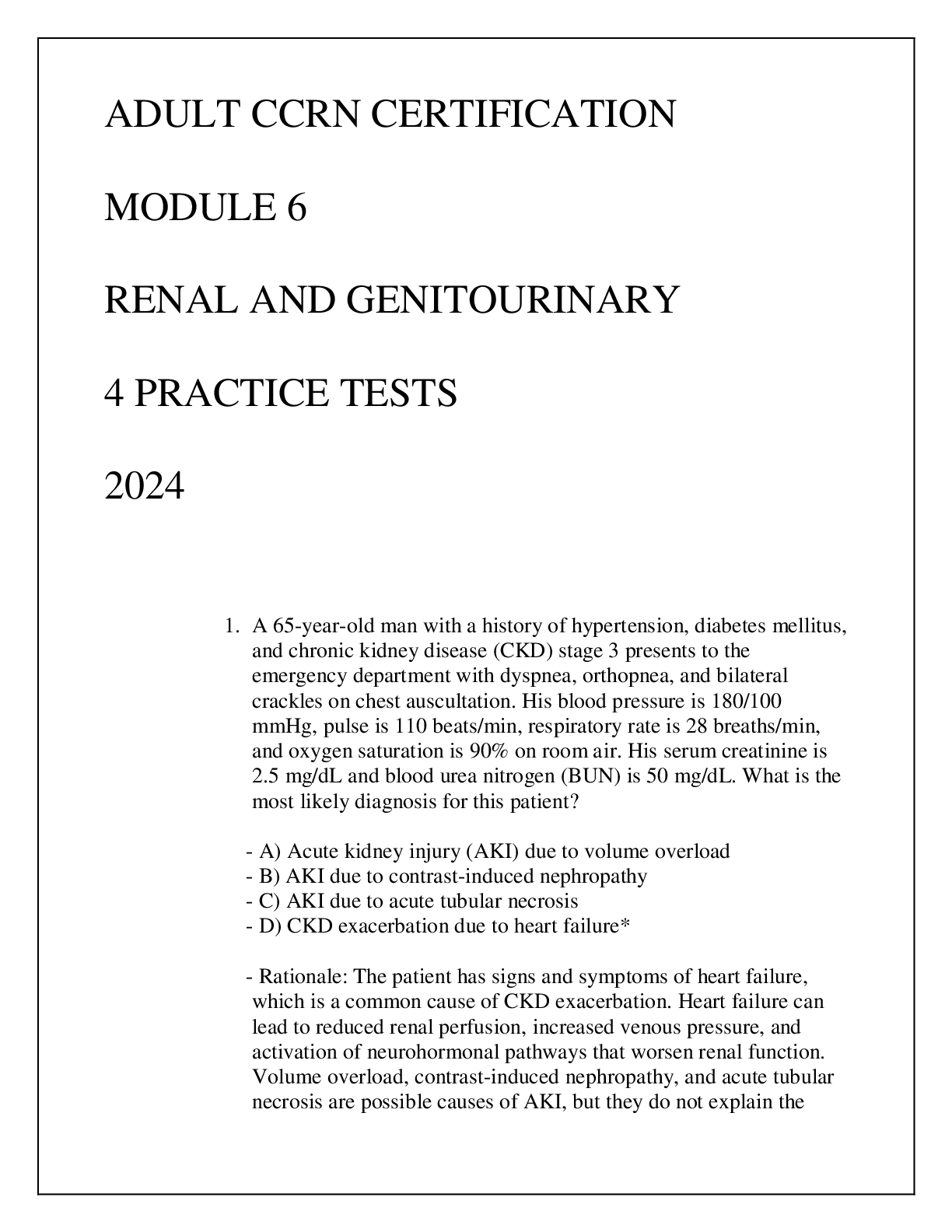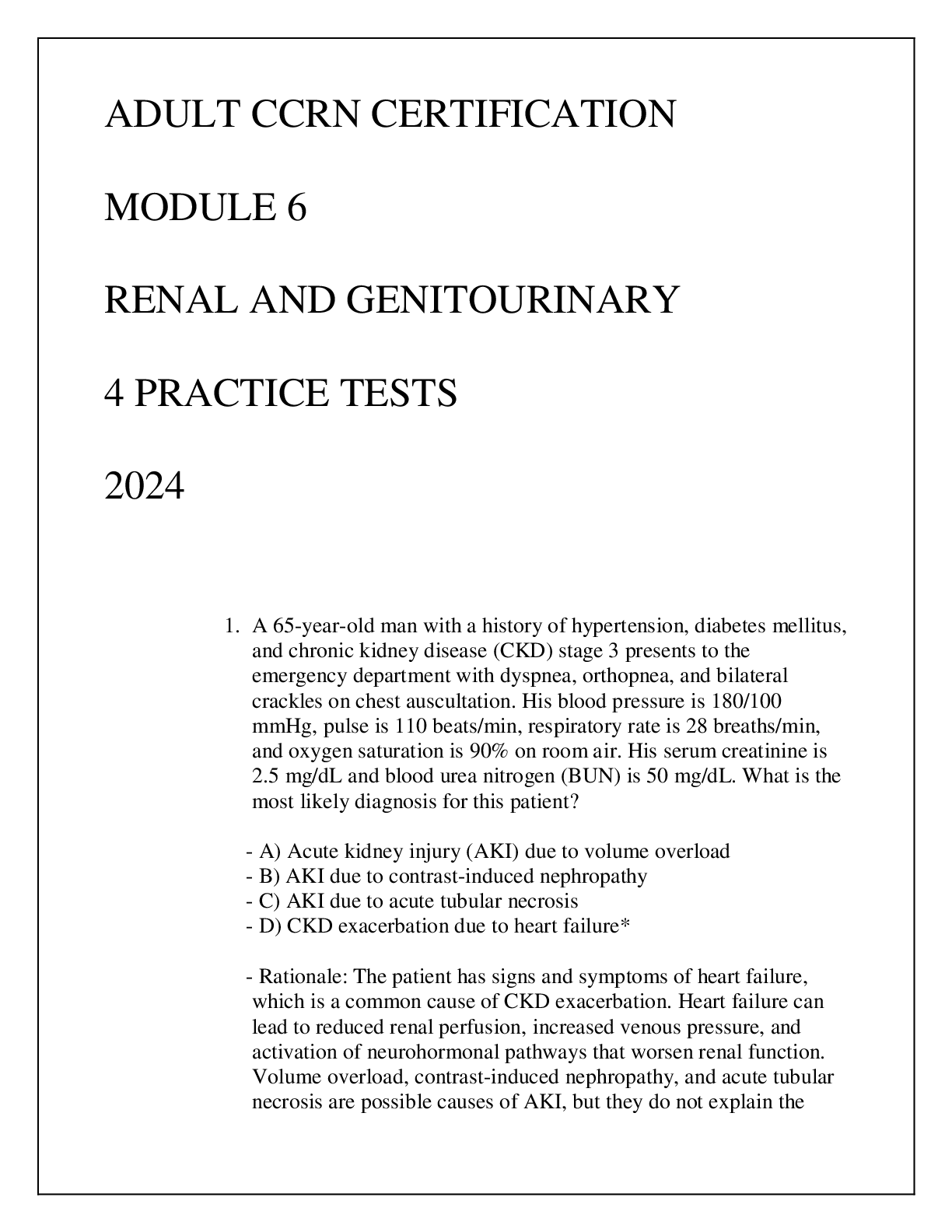*NURSING > EXAM > WGU D115 patho - Unit 6 renal and urologic systems Exam Questions Solved 2024/2025 latest update. (All)
WGU D115 patho - Unit 6 renal and urologic systems Exam Questions Solved 2024/2025 latest update.
Document Content and Description Below
Autoregulation of renal blood flow - correct answers prevents large changes in GFR when there are increases/decreases in BP; regulated neural and hormonal regulation renin-angiotensin-aldosterone syst... em - correct answers -decreased blood pressure causes the juxtaglomerular cells of kidneys to secrete renin which converts angiotensinogen (inactive) to angiotensin I (active) which is then converted into angiotensin II by angiotensin-converting enzyme (ACE) -Angiotensin II stimulates the adrenal cortex to secrete aldosterone - leads to absorption of Na and increased blood pressure -once blood pressure is restored, there is a decreased drive to stimulate renin release glomerular filtration - correct answers the movement of fluid and dilutes across glomerular capillary membrane into the Bowman space tubular reabsorption - correct answers Movement of fluids and solutes from tubular lumen to the peritubular capillary plasma tubular secretion - correct answers Transfer of substances from the plasma of the peritubular to the tubular lumen, active and passive transport Excretion - correct answers Elimination of a substance in the final urine Aging and Renal System - correct answers Decrease: size of kidney, renal blood flow, GFR, number and size of nephrons Increase: glucose in urine, urgency, frequency, nocturia Kidneys are less able to adapt to system changes Creatinine - correct answers Substance produced by muscle, is measured in plasma and urine to calculate a commonly used clinical estimate of GFR blood urea nitrogen (BUN) - correct answers blood test that measures the amount of urea in the blood. An increased BUN detects an abnormality in renal function. BUN is also an indicator of hydration status Common causes of urinary tract obstruction - correct answers Stones, strictures, congenital compression, tumors, and abdominal inflammation neurogenic bladder - correct answers a urinary problem caused by interference with the normal nerve pathways associated with urination obstructive uropathy - correct answers anatomic changes in the urinary system caused by obstruction Types of obstructive uropathy - correct answers Upper urinary: kidney stones, tubulointerstitial fibrosis Lower urinary tract: neurogenic bladder, overactive/underactive bladder Anatomic: urethral stricture, prostate enlargement, pelvic organ prolapse, partial obstruction of urethra Tumors Highest risk for UTI - correct answers Premature newborns, prepubertal children, sexually active/pregnant women, women treated with antibiotics that disrupt normal vaginal flora, spermicide users, estrogen-deficient post menopausal women, individuals with indwelling catheters, DM, neurogenic bladder, urinary tract obstruction CAUTI - correct answers catheter associated urinary tract infection [Show More]
Last updated: 3 months ago
Preview 3 out of 10 pages

Loading document previews ...
Buy this document to get the full access instantly
Instant Download Access after purchase
Buy NowInstant download
We Accept:

Reviews( 0 )
$12.00
Can't find what you want? Try our AI powered Search
Document information
Connected school, study & course
About the document
Uploaded On
Apr 21, 2025
Number of pages
10
Written in
Additional information
This document has been written for:
Uploaded
Apr 21, 2025
Downloads
0
Views
18


